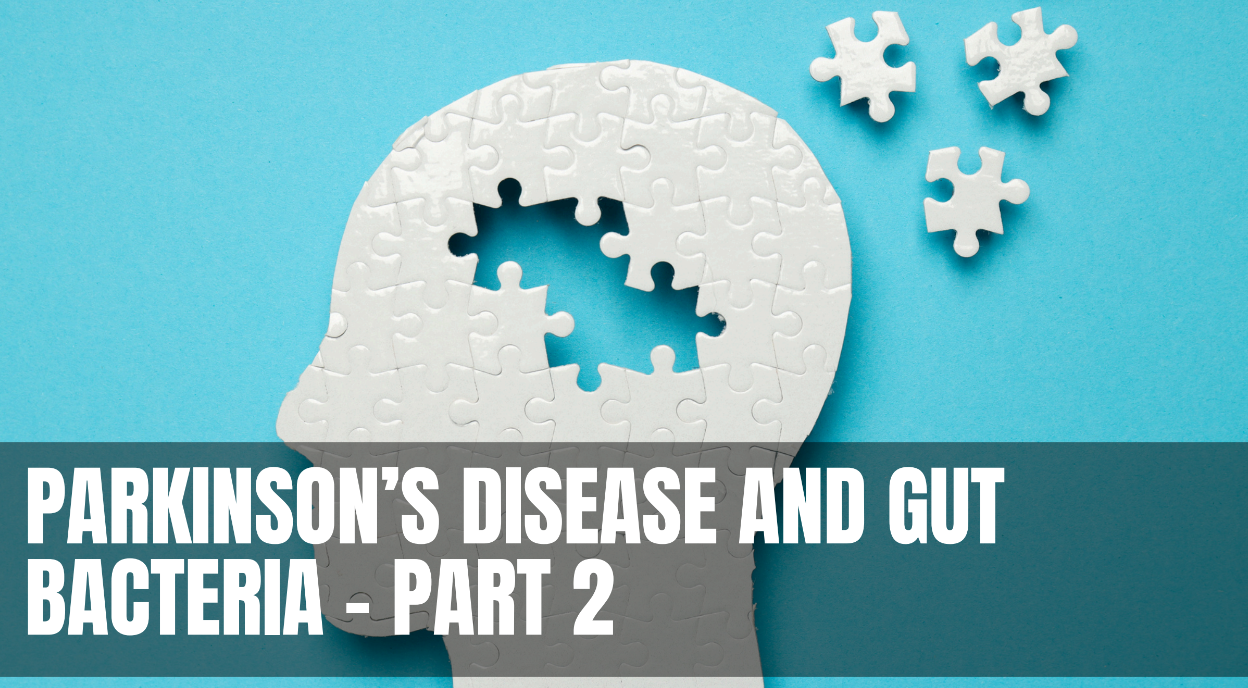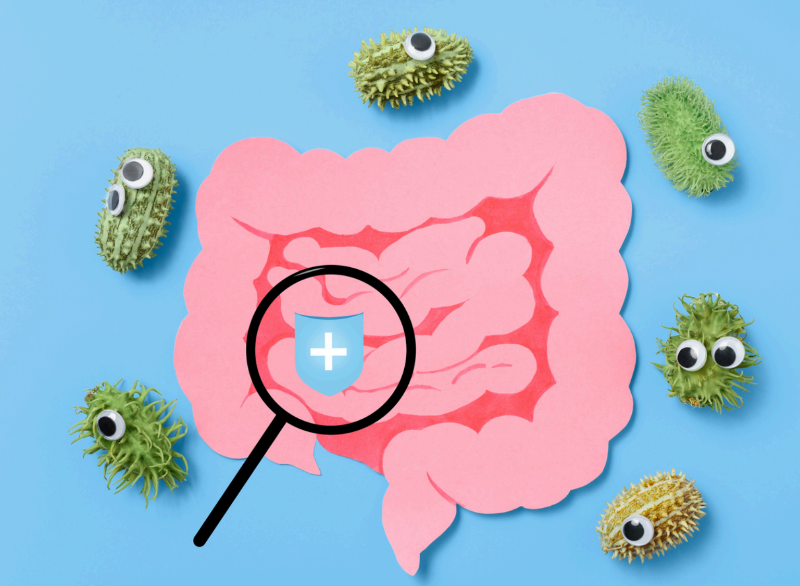Parkinson’s Disease and Gut Bacteria – Part 2

Recent discoveries have implicated the gut microbiome in the progression and severity of Parkinson’s disease; however, how gut
bacteria affect such neurodegenerative disorders remains unclear. Now we can report that the Bacillus subtilis probiotic strain
PXN21 inhibits α-synuclein aggregation and clears preformed aggregates in an established Caenorhabditis elegans model ( those
roundworms again in Part One) of synucleinopathy. This protection is seen in young and aging animals.
Multiple B. subtilis strains trigger the protective effect via both spores and vegetative cells, partly due to a biofilm formation in the
worms’ gut and the release of bacterial metabolites. Research has identified several host metabolic pathways differentially regulated
in response to probiotic exposure.
Findings provide a basis for exploring the disease-modifying potential of B. subtilis as a dietary supplement!
The accumulation of misfolded α-syn into pathological aggregates plays a central role in the pathogenesis of PD and other
synucleinopathies (Synucleinopathies are a subgroup of neurodegenerative diseases characterized by impairment of alpha-
synuclein (αSyn) metabolism, producing abnormal intracellular deposits(namely progressive aggregation of insoluble fibrillary αSyn
in neurons and glia).
Significant effort has been invested into finding ways to suppress the formation or enhance the clearance of toxic α-syn aggregates
as a treatment for PD, though no such therapies are available yet. Previous studies suggest that the presence of distinct groups of
bacteria in the gut microbiome modulates PD pathology. However, deciphering the precise effect of individual bacterial species
remains challenging.

Probiotic Bacillus subtilis Protects against α-Synuclein Aggregation in …Recent discoveries have implicated the gut microbiome in the
progression and severity of Parkinson’s disease–anti-aggregation properties of B. subtilis remain, to a large extent, distinct from its
anti-aging effects. Interestingly, based on autopsy observations, Braak and co-workers proposed the hypothesis that the primary
events of α-syn aggregation and spreading originate outside the brain, in the anterior olfactory nucleus and the dorsal motor
nucleus of the vagus, further propagating through the cranial nerves from the peripheral nervous system to the brain and the other
vulnerable areas in the central nervous system (CNS), including the striatum and substantia nigra.
Regardless of the direct (causal) involvement of α-syn spreading from the gut to the brain in the pathogenesis of PD, a growing body
of evidence now indicates the presence of alterations in the microbiota of PD patients.
However, the good news is probiotics, especially B. subtilis, are not alone–in comes the amazing and complimentary world of Mushrooms!
Comprehensive and alternative medicines have recently attracted scientific researchers’ attention for treating NDs. Edible
mushrooms are essential for preventing several age-based neuronal dysfunctions such as Parkinson’s and Alzheimer’s diseases.
It has also been reported that edible mushrooms (basidiocarps/mycelia extracts or isolated bioactive compounds) may reduce beta-
amyloid-induced neurotoxicity. Medicinal functional mushrooms are being used for novel and natural compounds that help modulate immune responses and possess anti-cancer, anti-microbial, and antioxidant properties. Compounds such as polyphenols, terpenoids, alkaloids, sesquiterpenes, polysaccharides, and metal chelating agents are validated in different ND treatments.
Anti-Aging and Neuroprotective Properties of Grifola frondosa and Hericium erinaceus Extracts
Farida Tripodi 1, Ermelinda Falletta 2, Manuela Leri 3, Cristina Angeloni 4, Daniela Beghelli 5, Laura Giusti 6, Riccardo Milanesi 1,
Belém Sampaio-Marques 7 8, Paula Ludovico 7 8, Lorenzo Goppa 9, Paola Rossi 10, Elena Savino 9, Monica Bucciantini 3, Paola
Coccetti 1

Abstract
“… increasing evidence indicates that medicinal mushrooms have several beneficial effects. One of the main issues in Western
countries is represented by the challenges of aging and age-related diseases, such as neurodegenerative disorders. Among these,
Parkinson’s disease (PD) affects 10 million people worldwide and is associated with α-synuclein misfolding, also found in other
pathologies collectively called synucleinopathies. Here, we show that aqueous extracts of two edible mushrooms, Grifola frondosa,
and Hericium erinaceus, represent a valuable source of β-glucans and exert anti-aging effects in yeast. Their beneficial effects are
mediated through the inhibition of the Ras/PKA pathway, with increased expression of heat shock proteins and a consistent increase
of both mean and maximal lifespans. These fungal extracts also reduce the toxicity of α-synuclein heterologously expressed in yeast
cells, resulting in reduced ROS levels, lower α-synuclein membrane localization, and protein aggregation…..data suggests using G.
frondosa and H. erinaceus as a functional food to prevent aging and age-related disorders, (is valid) in further supporting the neuro-
healthy properties of these medicinal mushroom extracts.
In conclusion, we have a three-step sequence to help defuse, perhaps help to prevent, and to start to heal neurological structures
from the damaging alpha-syn proteins:
1. Use of “B subtilis” at the probiotic core
2. Mushroom adaptogens
3. Supportive additional adaptogens ( like olive, turmeric, etc) and key nutrients.
Keep healthy, curious, and active!
Dr. Koz
